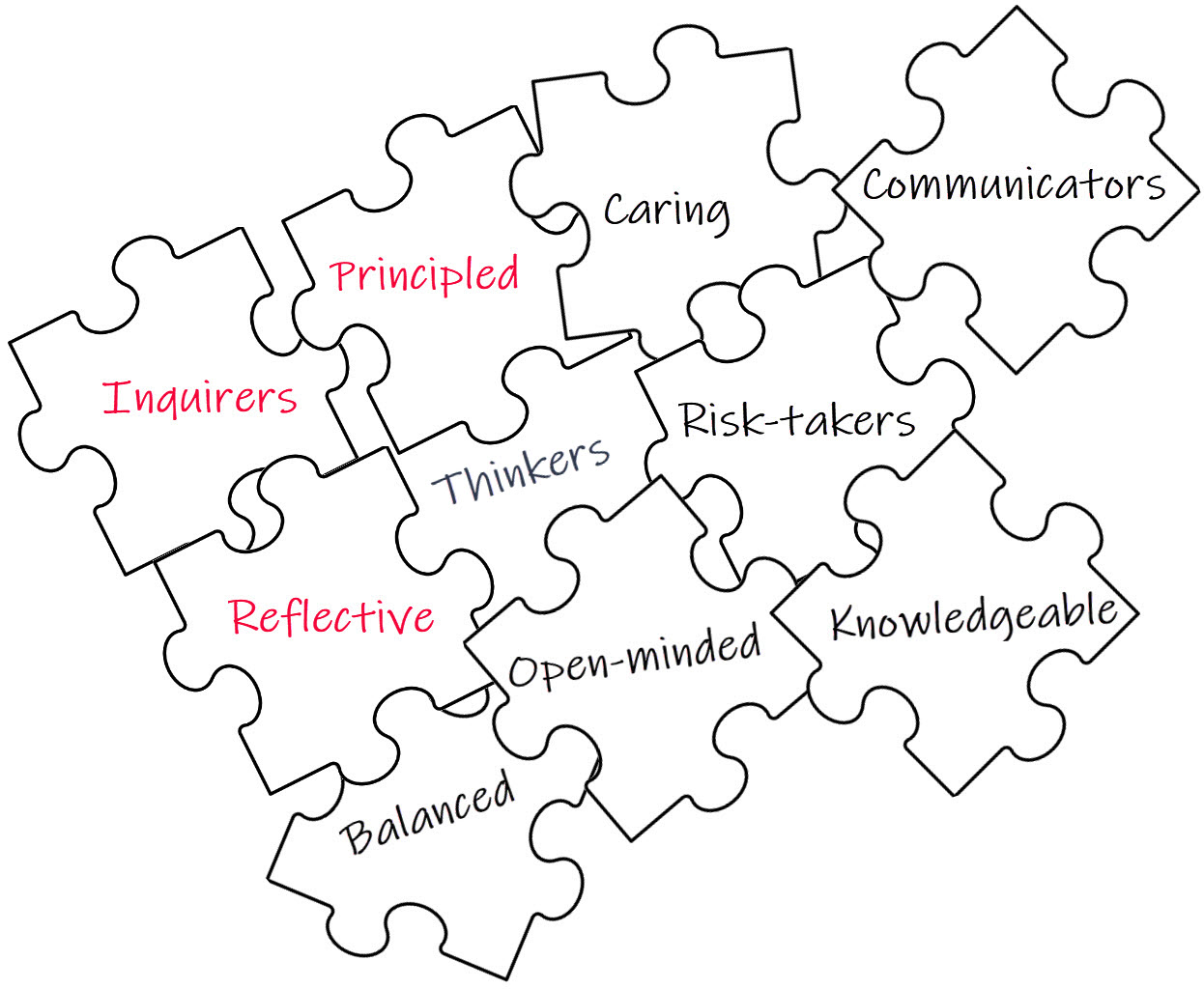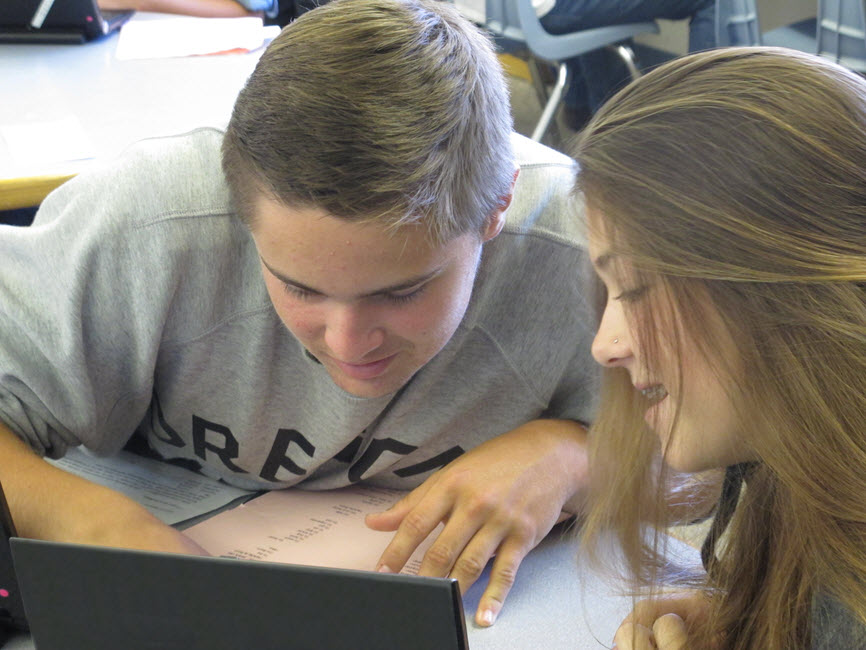Authentic Stories
Vivienne Blake, Senior School Librarian, coaches students working on extended essays at the International School of the Basel Region in Switzerland (ISB). She has developed scenarios in order to raise their awareness of the practical and principled choices they are likely to face while doing academic work. Students discuss the scenario, ask questions, define the dilemma and weigh various trade-offs. She facilitates their conversation, corrects misinformation and clarifies misunderstandings.
A Scenario about Citation

A student has to submit her English Language and Literature essay in a few hours. She’s pressed for time because she’s been studying for an exam in Math, which is her most challenging subject. She’s hesitant to dive into the school’s databases because she’s unclear about which to select and doubts she can search them effectively. She finds a relevant quote on the web, but there’s no citation or link to the original source.
Exploring Attribution
How might a student deal with incomplete citation information under time constraints?
- What are the student’s options for help?
Might she get an extension from the teacher? Or an excuse note from her parent? Does the librarian or teacher have online office hours? Could a friend help her find the quote? - Does the student need to locate the original quote?
All the style manuals advise students to try to locate the original source of the quote (APA 8.6; MLA 6.77; Chicago 14.260). Students will probably want to share their own challenges searching for quotes, perhaps on the open web, within quote sites, Amazon or Google Books, a journal database or an archive of the author’s work. Was the author misquoted? Or was the quote attributed to the wrong person? The handbooks don’t regard this verification process as a text-matching task. Rather a researcher is expected to verify both the accuracy and the context of the quote. Turabian advises: “If one source includes a useful quotation from another source, readers expect you to obtain the original to verify not only that the quotation is accurate but also that it fairly represents what the original meant” (17.9.3). In order to understand the meaning of the quote, does the student have to read the whole work? A chapter? Or just skim the chunk of text that includes the quote?
- If the student can’t find the primary source of the quote, how should she cite it?
There are two methods of attributing a source that is quoted within another source. A student can paraphrase or quote the secondary source, making clear that the primary source wasn’t consulted. Or one can create an “indirect citation,” formatted as either an in-text reference or a footnote, according to the style’s conventions.
Student Scholars
Blake warns that students may comply with academic rules without actually understanding their purpose.
“While the IB program values the technical aspects of accurate documentation, it’s clear that academic integrity goes beyond accurate citations and appropriate style conventions. Students may avoid plagiarism but nonetheless fail to understand the concepts and values of principled behavior.”
By rehearsing practical choices within an ethical framework, students internalize the IB “values and principles that lie behind such behaviours.” Mastering a microskill like attribution can deepen students’ understanding of academic writing.
“When students must use information from an indirect source — and they attribute it accurately and represent it truthfully — they are demonstrating an understanding of the transparently collaborative nature of scholarly research. In this manner, all contributions build a field’s collective knowledge.”
Embedded Ethics

“If our students are to exemplify the IB Learner Profile,” Blake asserts, “they must be continually inquiring critically, thinking creatively and, in the IB’s words, making their ‘knowledge, understanding and thinking transparent.’”
She has worked closely with Sean Coffey, the ISB Diploma Program Coordinator, for the last six years to consolidate and revise disparate lessons to form a coherent, sequenced curriculum with embedded ethics. “If we are to build and sustain an ethical community, we must identify opportunities to develop an ethical mindset within students and an academic ethos throughout the school.”
Indirect Attribution: A NoodleTools Template Project
As a NoodleTools subscriber, you can download and reuse a “Template Project” that can help you teach and formatively assess students’ understanding of indirect and direct attribution.
Instructions: In the MLA, APA and Chicago template projects linked below, you will see a secondary source that discusses a quote by Black Hawk and his autobiography containing the quote. The following short assignments can help you teach and formatively assess different aspects of scholarly attribution:
- Read the primary source. Copy the pertinent section of Black Hawk’s writing that includes “the origin of all our serious difficulties with the whites” into the Direct Quote field of a NoodleTools notecard. Explain his claim in the Paraphrase or Summary field.
- Read the secondary source. Select a section of David Noon’s blog entry which discusses this quote and copy it into another notecard. Paraphrase his claim. In the My Ideas field, evaluate how well Noon quoted and represented Black Hawk.
- Write short definitions of indirect and direct attribution citing the Black Hawk examples. (A model of each style’s indirect citation is listed below the template link).
- MLA: https://my.noodletools.com/public/210902231634371663442287
…the end of your sentence (qtd. in Noon). - APA: https://my.noodletools.com/public/210902231524371663442286
…the end of your sentence (as cited in Noon, 2008). - Chicago: https://my.noodletools.com/public/210902231252371663442276
1. Full footnote for the orginal source quoted in full footnote for the secondhand source.
Case Studies
To address persistent ethical issues, consider occasionally using “case studies.” These are real-life narratives with rich details that convey a sense of authenticity that may contribute to students’ buy-in.
- Encouraging Academic Integrity Through a Preventative Framework (Langara College, 2020) features an open-access toolkit with case studies grounded in both intention and behavior.
- “A Plagiarism Workshop” (Kent State, 2021) includes case studies in which real situations are “enhanced” to reveal the nuances and ambiguities of plagiarism.
- “Academic Integrity Case Studies” (Penn State, 2017) presents each narrative with three possible responses.
- Tutorial Episodes (Ryerson University) offers academic integrity scripts like this one which could be performed as Reader’s Theatre.
Scenario Ideas (courtesy Vivienne Blake)

- “What if you were doing extra work to boost the group’s grade while another team member wasn’t pulling his/her weight?”
- “Suppose you overheard one student giving extensive help to a struggling classmate?”
- “Are you responsible if a classmate reads your draft essay ‘for ideas’ but then both essays are flagged in a Turnitin similarity report?”
- “What if you see students discussing answers to exams on social media before the 24 hour embargo period has elapsed, thus giving students in another time zone an unfair advantage?”
General Advice on Writing Scenarios
Scenarios can spark rich conversations, but adolescents are skeptical of loaded choices. Create situations in which reasonable people (including their peers) might disagree (37).
- Describe characters that students can imagine knowing or being.
- Frame situations as genuine moral dilemmas that can cause “even good people to make bad ethical choices.”
- Revise the senario each time to ground it in the assignment, so that students have a “real-world stake in [the problem’s] resolution” (Fontichiaro).
- Add details like the database name or the topic assigned, so that students are rehearsing responses to actual work.
For more information
Abilock, Debbie. “Adding Friction: A Librarian Asks, ‘How Do I Create Effective Plagiarism Scenarios?” School Library Connection, Mar. 2021, schoollibraryconnection.com/Content/Article/2259820.
Fontichiaro, Kristin. “Framing Inquiry with Scenarios.” School Library Monthly, vol. 31, no. 3, Dec. 2014, schoollibraryconnection.com/Content/Article/1967158.
